The How To’s of Bird Watching and Wildlife Observation
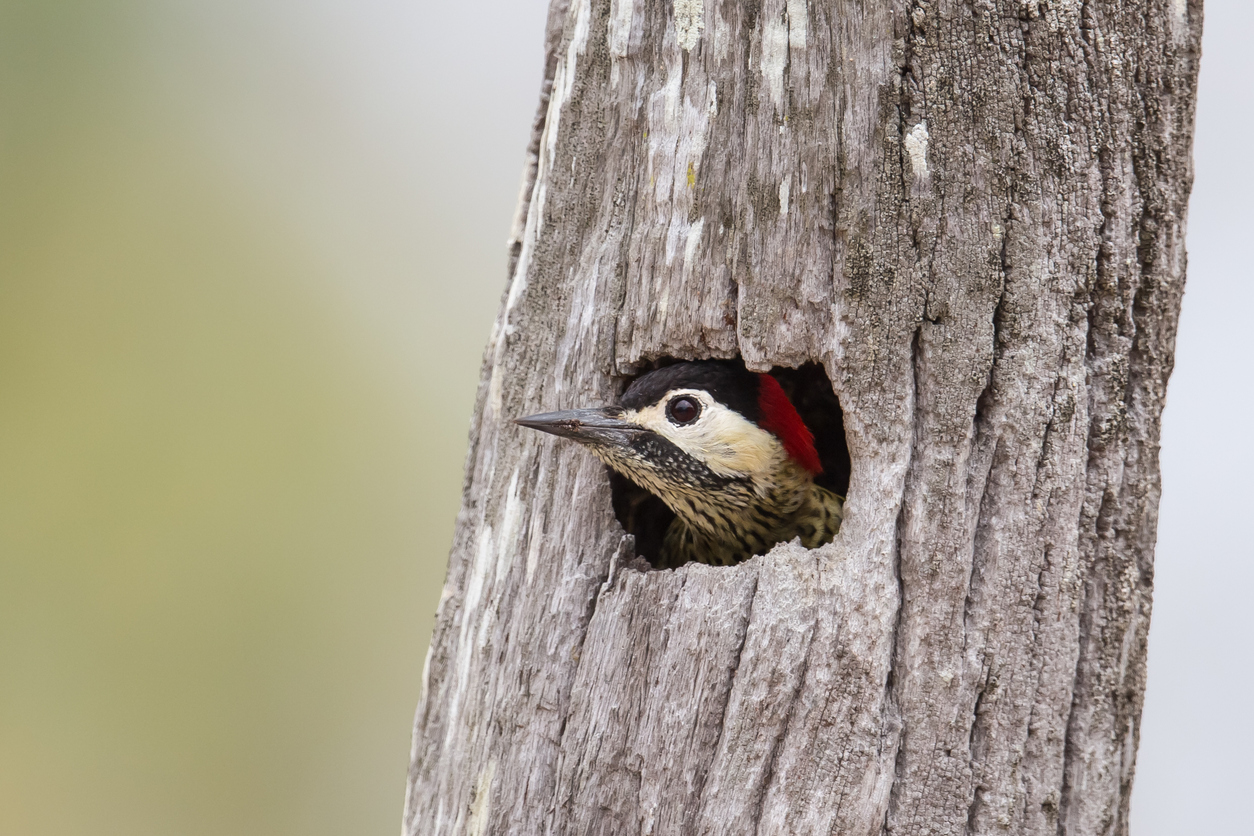
Being outdoors inevitably puts you in close proximity to a myriad of interesting wildlife – including plants, birds, and other animals and insects.
Part of the joy of being outdoors is being able to watch and observe these things and get closer to them than the average city dweller might. Also, from a wilderness survival perspective, you might depend on these plants and animals to provide you with food or other necessities.
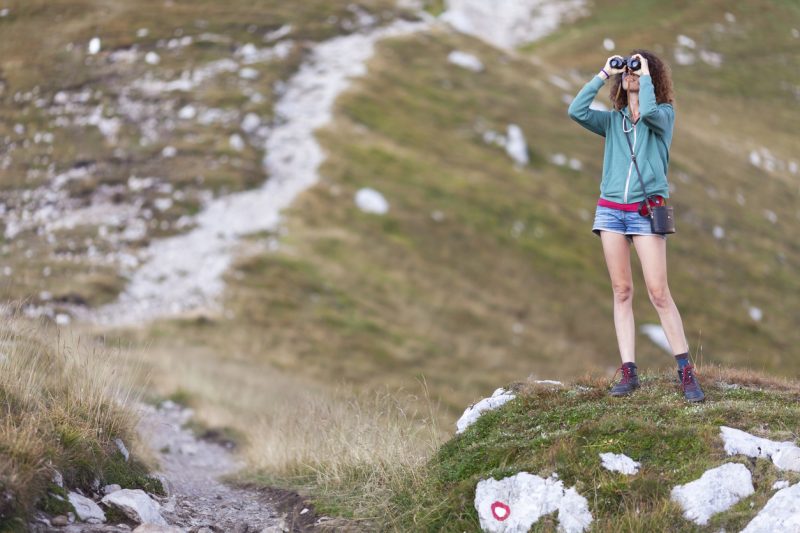
When you are out and about in the outdoors, binoculars are a fantastic tool to bring you even closer to nature. They are, however, quite heavy and unless you are specifically out hunting or bird watching, the weight of a full-sized set might not be something you want to lumber yourself with.
Luckily, there are plenty of compact binoculars that weigh very little but which I would consider to be a vital part of your outdoor kit.
They are useful for navigating and scouting ahead as well as obviously for nature observation. These compact binoculars will weigh less than half a full-sized set and take up much less space. They can easily fit in a pocket or pouch or be carried easily and kept accessible using this simple trick.
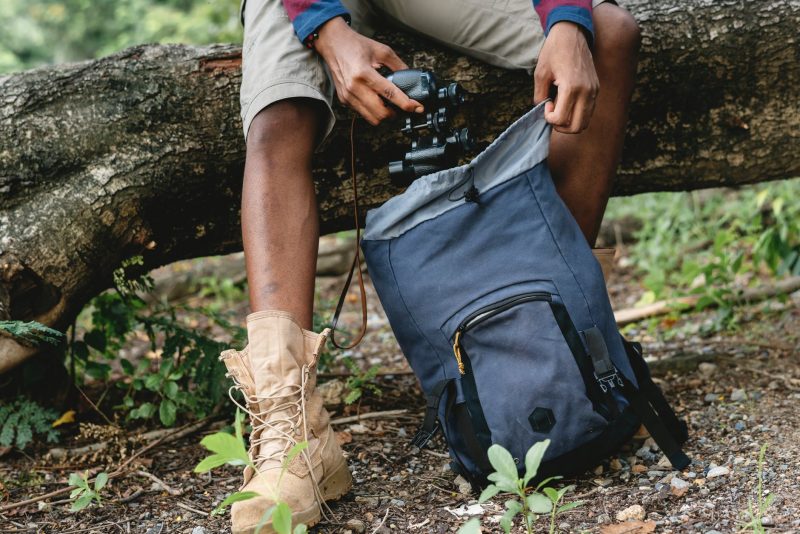
For an affordable alternative to dedicated binocular straps, and something better than the simple round-the-neck arrangement that comes with most binoculars, you don’t need anything more than a simple piece of paracord.
Take a loop of paracord and a couple of split rings, like the kind for attaching keys to your keyring, which will fit your binoculars at the normal point where the strap attaches.
Form your paracord loop with a single overhand knot through both ends of the cord, leaving several inches hanging free at the end. These ends beyond the knot are important, and we will return to them later. Now, thread the loop through the split rings which are attached to your binoculars, and pull the cord so that the binoculars are at the center of the loop.
Now, fold the loop back on itself and slot one side of the loop between the two loose ends near the knot you tied at the beginning. This knot should be in the dead centre of the loop at the furthest point from your binoculars.
Now, tie a second overhand knot in those loose ends, enclosing the unknotted portion of the loop between the two knots; a third knot can be added for security. What you will have is effectively two loops: one running from one side of the binoculars to the knot and one on the other side.
This allows you to wear your binoculars around your neck in the traditional fashion, or by putting your arms through the loops, you can wear it almost like a backpack, except on your front.
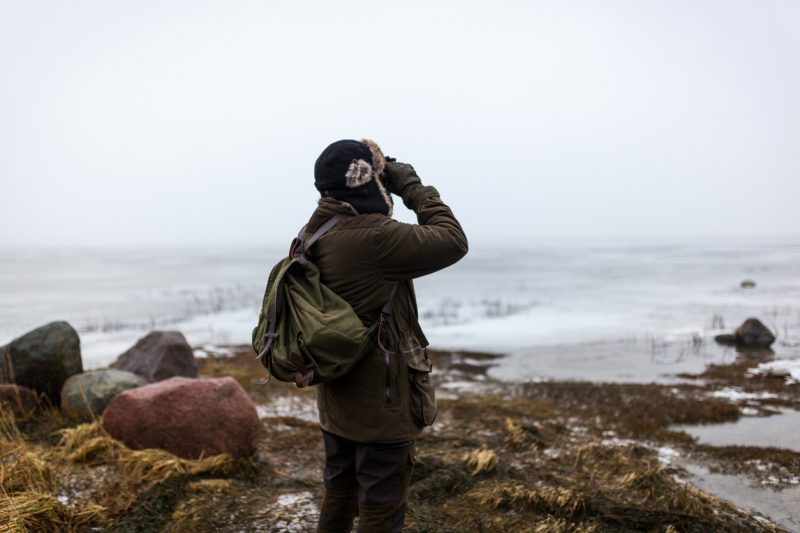
As the loops go around your arms, there is no direct pressure on your neck. This makes them far more comfortable to wear, and the thin paracord straps aren’t so bulky that they can’t be worn under a backpack or over heavy clothing.
This simple carry system adds no significant weight to your binoculars and takes up hardly any space. I have found it to be the perfect carry solution for all binoculars – from very heavy night vision models to tiny compact ones.
It also holds the binoculars tight against your chest so they don’t swing around, catch on undergrowth, or get tangled with any other kit that might be hanging around your neck, like a map case or compass.
As well as your binoculars, it may be worth carrying a simple field guide. For general nature observations, a pocket-sized but comprehensive field guide of flora and fauna is going to be most useful and will allow you to identify plants, animals, birds, and bugs. While a specialist bird or plant book might be more detailed and comprehensive, there are only so many specific books you can carry.
More important though than any of these bits of equipment are your skills of observation. Being able to spot movement and knowing where to look for certain things will drastically increase the number of interesting birds and animals you spot.
Knowing to scan woodland and forest edges for deer; to look particularly closely at reed beds for herons, egrets, and cranes; or that a particular footprint indicates the presence of a big cat can be very useful. Being able to recognize the indirect signs – footprints, feed signs, etc. – of an animal is at least as interesting as seeing them in the flesh.
Beavers leave very obvious signs, but the satisfaction of spotting the subtle footprints of a pine marten or stoat can’t be underestimated.
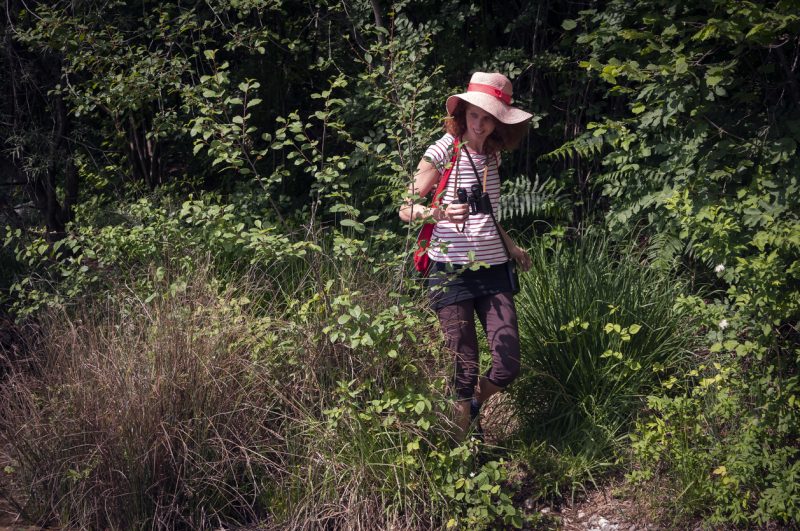
Moving quietly is important too – as is wearing muted colors rather than the purples and yellows popular among mountaineers. You will see a lot more in muted greys and greens.
Do bear in mind though that moving quietly through the woods may also put you in danger. Make sure you don’t get so consumed with sneaking up for a good view of a bird that you encounter a bear. The loud cries of “hey bear!” might not help you spot wildlife but they might save you from predatory mammals that you might not want to see up too close.
Plants can’t get away from you like birds and mammals can, but they are equally fascinating and can be very frustrating to find – especially if you are looking for a specific one and to identify it you have a lot of similar species to choose from.

Field guides are an excellent way to learn, and learning the habitat and growing conditions of plants of interest will help you find and identify them much more quickly.
This is useful particularly if you have an interest in edible plants and want to live off the land or simply supplement your boring boil-in-the-bag meals with a wild salad while you are out on your adventures.
